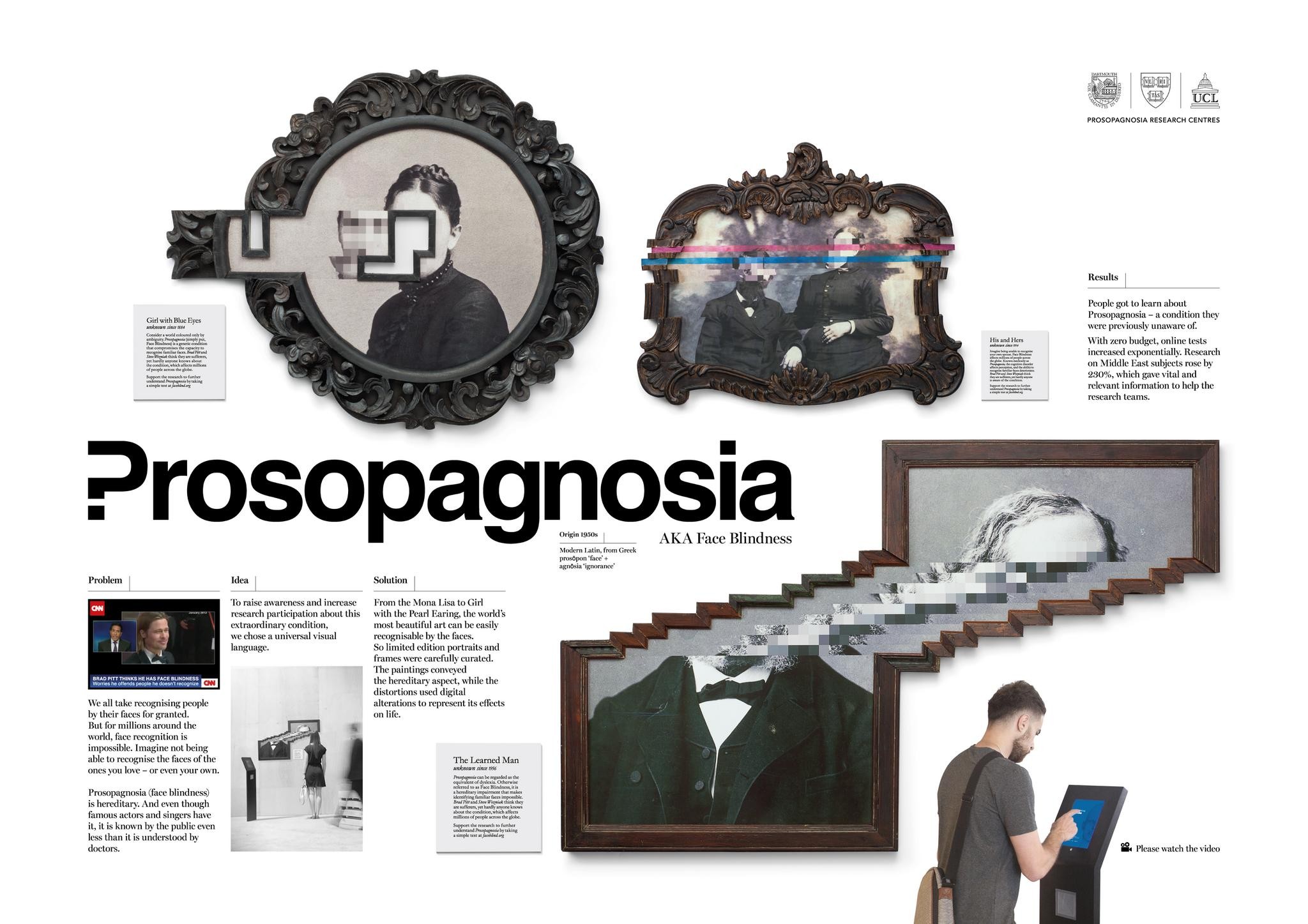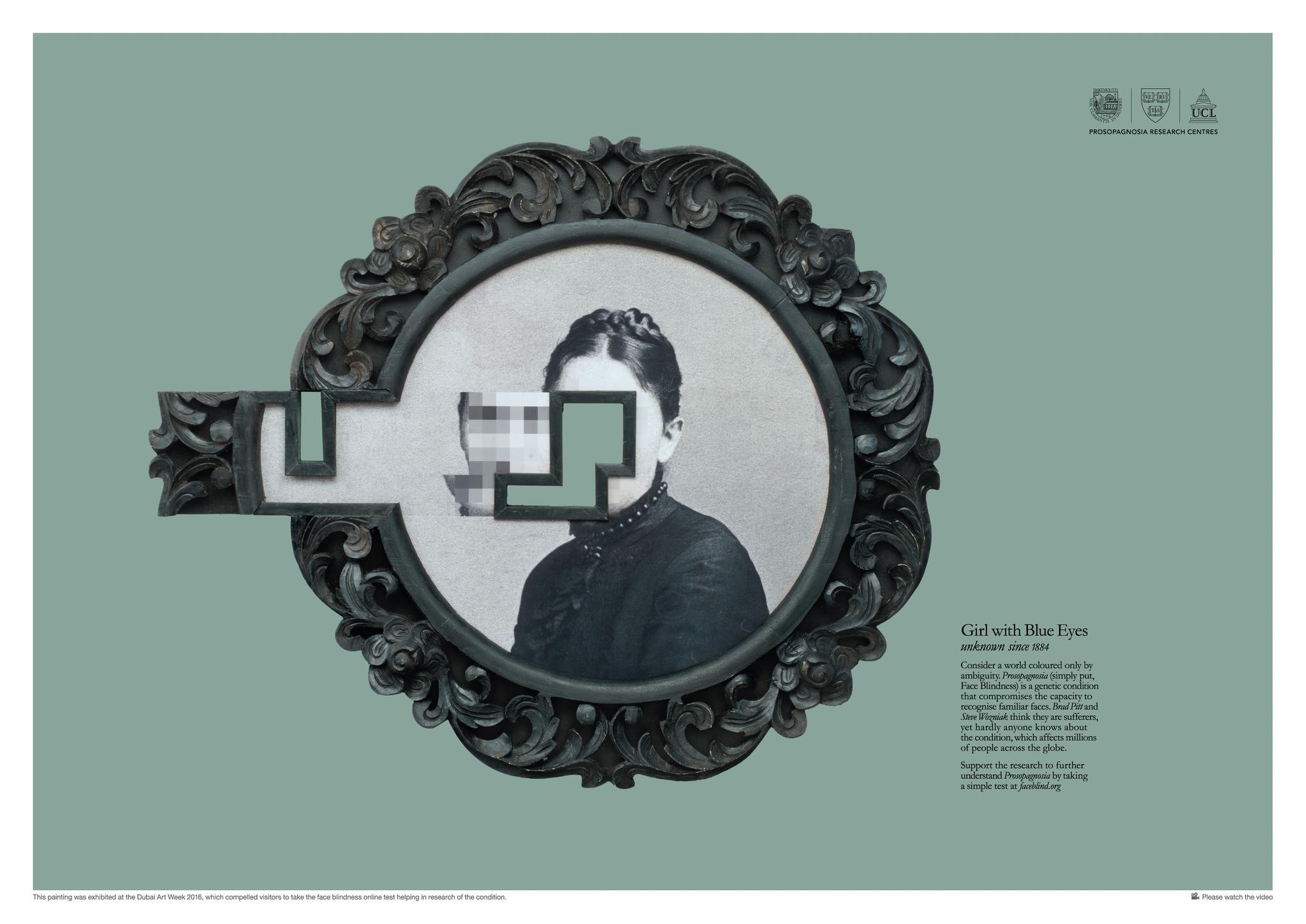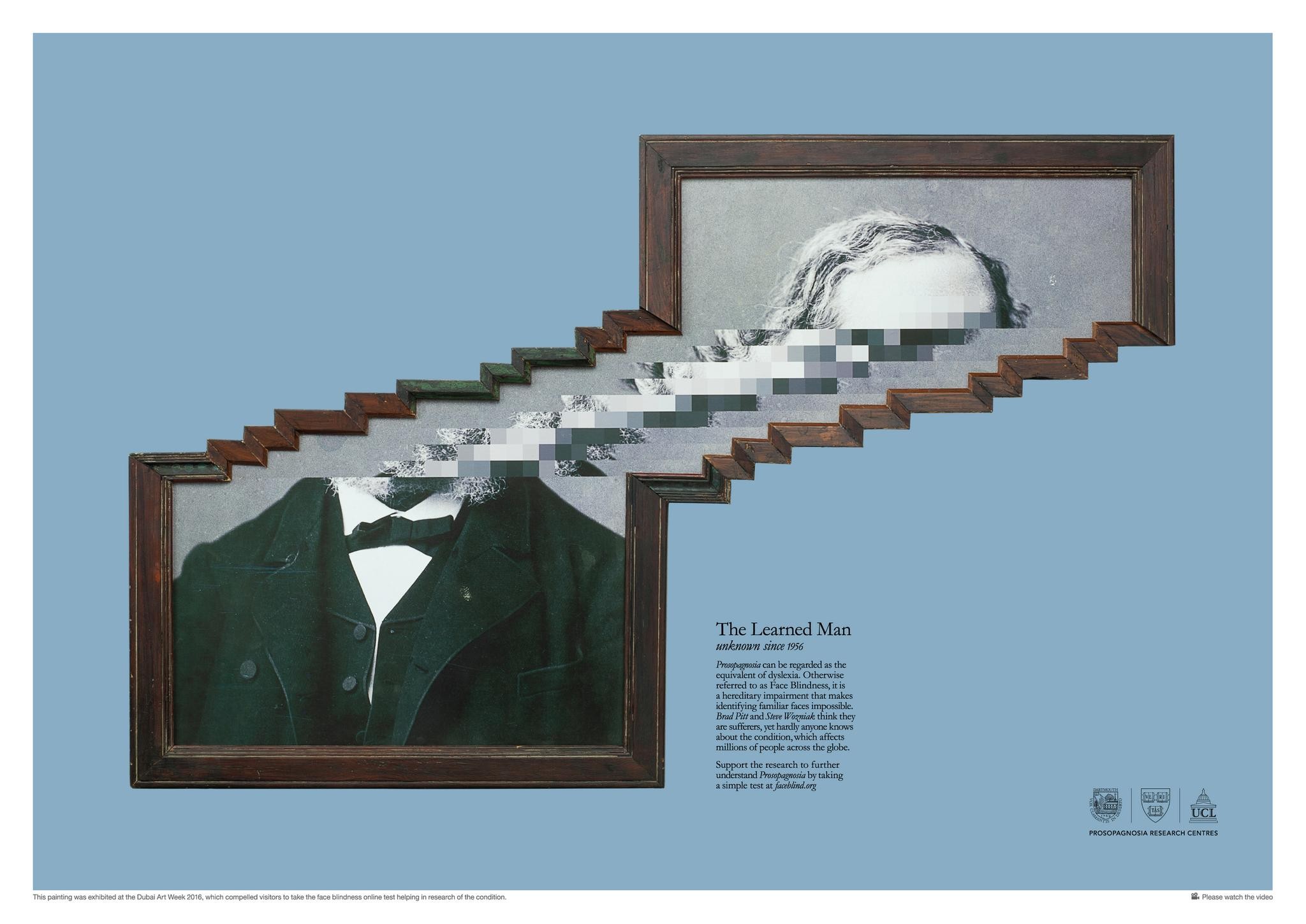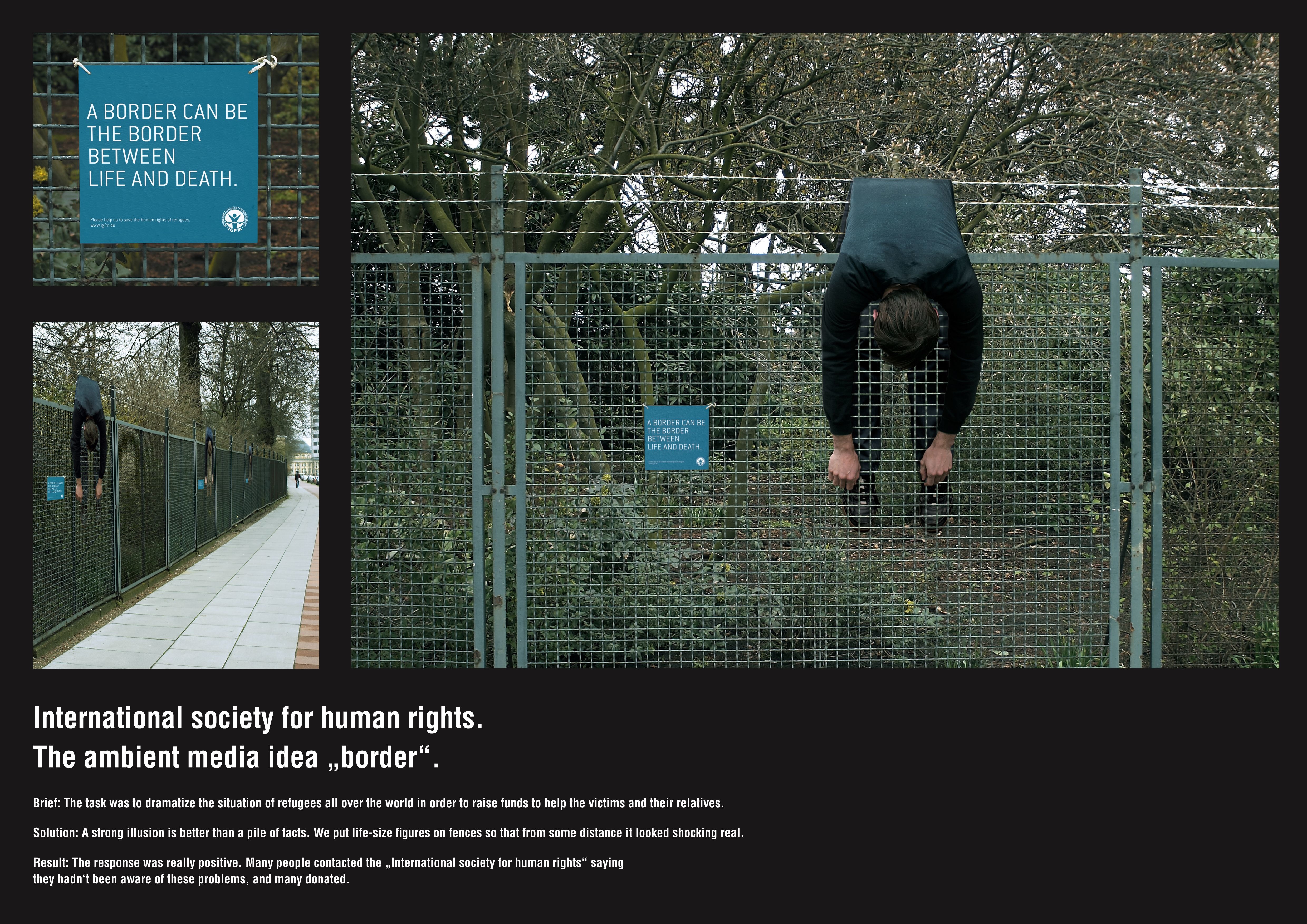Dubai Lynx
Face Blindness
Y&R DUBAI / FACEBLIND.ORG / 2017
Awards:



Overview
Entries
Credits
Overview
Background
Prosopagnosia, also called face blindness, is an impairment in the recognition of faces. It affects millions, including some celebrities like Brad Pitt. It is hereditary and, not surprisingly, prosopagnosia can create serious social problems. Prosopagnosics often have difficulty recognizing family members, close friends, and even themselves. They often use alternative routes to recognition.
The brief: To raise awareness and participation (for research purposes)
The primary reason why there is such a limited understanding and awareness of prosopagnosia is that few prosopagnosics have been intensively investigated. The Prosopagnosia Research Centers of Harvard, Dartmouth College and University College London wanted more participants, particularly from regions outside of the ones where the centres are based.
Description
Prosopagnosia, also called face blindness, is an impairment in the recognition of faces. It affects millions, including Brad Pitt.
Face blindness is like dyslexia. Just imagine not being able to recognise their parents’ faces. Prosopagnosics have difficulty in putting a face ‘together’. Art is heavily dependent on recognition. From the Mona Lisa to Girl with the Pearl Earing, the world’s most beautiful art can be easily recognisable by the faces in the picture.
So if art reflects life, our idea was to create art that reflects a unique, and remarkable condition that affects millions.
We created portraits that distorted perception on facial recognition and to explore the effects that a hereditary condition can have on cultural and personal identities.
Idea was brought to life at Dubai Art Week – the region’s biggest arts event. The portraits of the people had to resemble people of the Middle East, and South Asians.
Execution
So limited edition portraits and frames were carefully curated. The paintings conveyed the hereditary aspect, while the distortions used digital-like alterations to represent its effects on contemporary life.
The paintings took weeks to depict the condition in a new style, while remaining true to two important aspects: the effect of the condition itself as well as the hereditary aspect.
Everything from the wood for the frames to the colours in the paintings, and from the manipulation used to the angles and defragmentation – make the viewer witness the glitch in the brain that reflect what prosopagnosics see when they’re looking at faces.
Similar Campaigns
7 items



